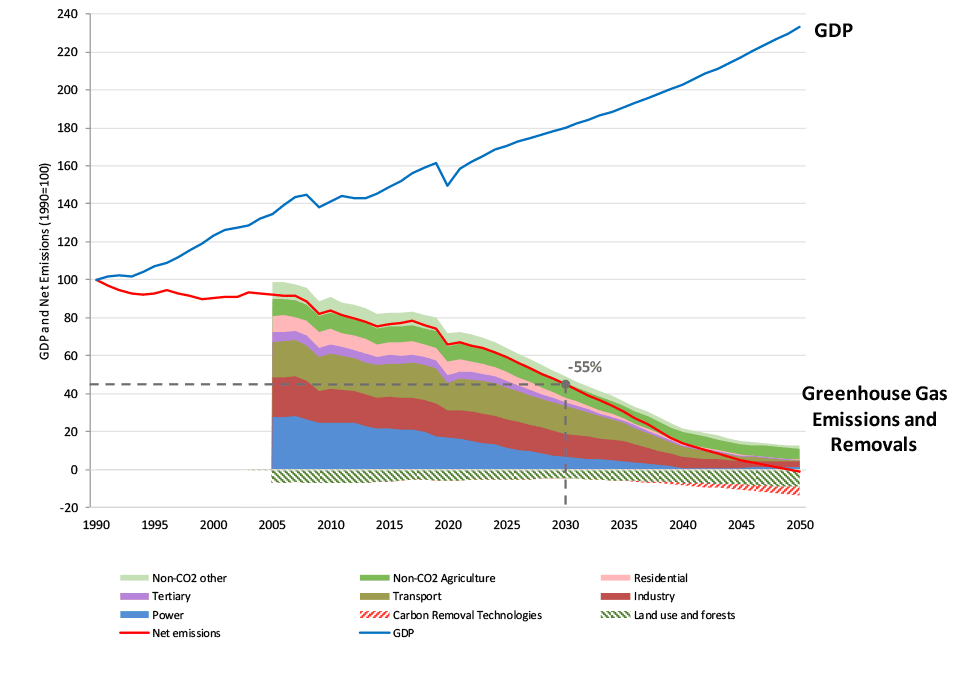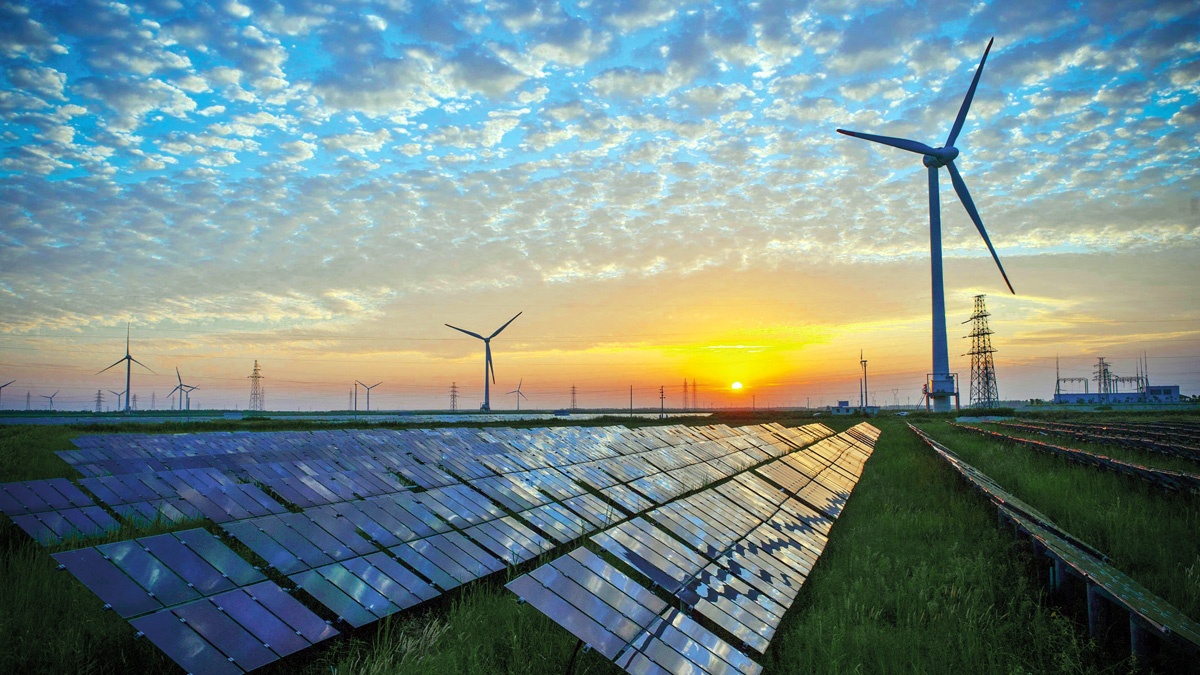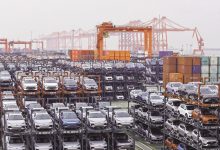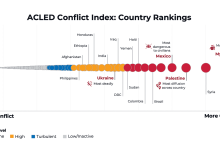Energy Transitions in Europe
Energy transitions has hit a snag. Since the end of the World War II and even today, the economies of industrialized countries have relied almost exclusively on fossil fuels. While this dependence of countries on this non-renewable energy has increased due to high energy efficiency and improvement of living conditions, it slowed down however since 1973, when the oil shock took place. This shock has proven to be terrible for countries around the world. A turning point was the Yom Kippur war (which put Israel in front of an Arab coalition led by Egypt and Syria). To penalize the Western countries that helped Israel, the OPEC (Organization of Petroleum Exporting Countries) member Arab countries have decided to restrict oil production, tripling, or increasing even by four-fold the oil price. For this reason, several countries have decided to develop the construction of nuclear power plants. But even if nuclear power does not emit greenhouse gases, it is still subject to very high risks in case of accident, as it was very well seen during the nuclear disasters in Chernobyl or Fukushima.
The issue of renewable energy, intermittence
Solar panels or wind turbines are intermittent energy sources. They depend exclusively on weather conditions, which increases the uncertainty on the capacity to generate power: if there is no wind or sun, production achieved by these wind turbines and solar panels becomes zero. This is why the total power output in Europe, or the world does not come mainly from renewable energy.
Race and politics of energy transitions: leading countries
Northern European countries are often quoted as a model of energy transition. However, except for Iceland, with its geothermal potential, most of them still rely on fossil fuels or nuclear power. Therefore, there is no Scandinavian model, but situations that vary from one country to another.
First of all, these are sparsely populated countries (except for Denmark) and have a high level of development. The energy resources mobilized for domestic consumption per capita, as well as electricity consumption per capita are quite high, which reflects the importance of their energy consumption.
In the energy transition of northern countries, it is necessary to analyze the energy mix, which varies. For example, coal continues to be used in Finland and Denmark, and the oil and gas share remains significant in Norway and also in Denmark.
Five Scandinavian models
To explain the existence of these five models, both the resources available for some countries and the history of their development should be known. The available resources are, on the one hand, hydrocarbons discovered in the North Sea, then in the Norwegian Sea and the Barents Sea and, on the other hand, coal extracted since the beginning of last century in Norway, Sweden, and Finland.
Oil exploration in the North Sea started in 1966, one year after the division of territorial waters. In 1969, in Norway, the company Phillips Petroleum discovered the giant field Ekofisk, 320 south-west to Stavanger. Oil and gas production started in 1971 and was entrusted to Norway’s Statoil. In 2011, the important oilfield Johan Sverdrup was discovered, where production could account for 25% of the planned production of the country, and in 2011, the Norwegian Parliament approved the common development and exploitation plans.
In Denmark, oil production started in 1972 and gas production in 1984, after the discovery in 1979 of large fields. In early 1990s, the Danish distribution network supplied gas to the entire country, but oil and gas production has fallen since 2005. However, Norway is in a better position than Denmark: it is the seventh largest producer and the third largest exporter of natural gas and the 14th largest oil producer in the world.
Between 1960 and 1970, faced with increased energy demand, choices varied from one country to the other: Sweden and Finland chose nuclear power, while Denmark rejected it. Norway and Iceland relied on their major resources: hydrocarbons and geothermal energy. Since 1990, the energy choices have come closer due to everyone’s desire to reduce GES and, therefore, to develop renewable energy; however, Finland has decided to continue the nuclear path and Norway to continue to exploit its hydrocarbons.
Denmark, after the oil shock in 1973, decided to reduce its energy dependence and, in the 1970s, chose wind power, which is primarily onshore (of the 445 islands of the country, only 72 are inhabited), and then offshore wind power. Due to its geographical position, the country has in fact a competitive advantage: a record capacity factor of over 40% and even 50% (for example, at the Anholt offshore farm). As regards offshore wind power, Denmark installed the first wind park in the world, in Vindeby, in 1999 (11 turbines at 0.45 MW). As wind is strong and regular, wind turbines can be installed everywhere. Since 2013, the largest wind farm has been the one in Anholt: it totals 111 wind turbines (3.6 MW each) and an installed power of 400 MW. The country has two major players in the European wind power sector: Vestas (the largest producer of wind turbines until 2015, before the arrival of China’s Goldwind) and Ørsted (formerly Dong Energy). The wind power boom in Denmark is the outcome of a political strategy that involves national and local authorities, companies, as well as the population.
Iceland (330,000 inhabitants) is the country where almost 100% of the electricity consumed comes from renewable energy. Energy transition achieved by Iceland can be a source of inspiration for countries that want to increase their share of renewable energy. Although Iceland is a very good example of how a modern economy can develop using renewable energy, still, until the beginning of the 1970s, the country had to rely on fossil fuels to ensure most of its energy consumption. Despite the good intentions, Iceland did not resort to renewable sources, and the motivation was that it couldn’t cope with oil price fluctuations caused by the numerous crises that have hit the global market. Isolated, near the Arctic Circle, it needed a stable and economically viable energy resource.
In Iceland, known as the ‘land of fire and ice’, access to renewable energy is highly favored by its exceptional geology and geographical position. Located in the middle of the Atlantic on the fracture of the American and Eurasian tectonic plates, Iceland is a very active volcanic area that is exploited to produce geothermal energy. Glaciers cover 11% of the country. Sleet feeds the glacial rivers that flow from the mountains to the sea, contributing to hydroelectric resources. Moreover, the huge wind potential of the country is basically untapped.
Icelandic farmers, pioneers of geothermal heating
The first initiatives towards the development of renewable energy, both geothermal and hydroelectric, were taken by local entrepreneurs. In the early 20th century, a farmer found a way to use the hot water that came out of the ground to develop a rudimentary geothermal heating system. Municipalities have gradually followed the example and explored geothermal resources more systematically. The drilling technology, used for oil, made it possible to drill deeper to warmer water, in order to heat more homes. Large projects were developed with the implementation of geothermal heating systems at commercial scale. The first hydropower projects, similar to geothermal projects, were developed by responsible farmers to supply electricity to farms. In 1950, 530 small hydropower plants were built, creating independent energy generation systems spread across the country.
In the 1960s, to encourage the use of geothermal energy, the Icelandic government set up a geothermal drilling guarantee fund to provide loans for geothermal research and drilling tests, also covering costs in the event of an emergency. The legal framework was created to encourage households to connect to the geothermal heating network rather than continue to use fossil fuels. At the same time, Iceland has begun to focus on large-scale hydropower development, an attractive way for international industrial users to attract new industries to diversify the economy, but also to create jobs and a national power grid. Iceland’s case is unique. Although Iceland was a small and peaceful state in the 1970s, obstacles existed and success was not guaranteed, costs and energy security played an important role in the cohesion of municipalities, government, and the public. After centuries of poverty and foreign domination, the country did not have the basic infrastructure and adequate knowledge about the potential of its resources and did not have the experience to carry out large energy projects. Indeed, until the 1970s, the United Nations Development Program classified Iceland as a developing country. In addition, funding was provided by new, but inexperienced institutions.
Lessons learned from Iceland: based on its experience, Iceland gives the current and future countries that plan to start an energy transition the following advice to overcome the obstacles in the implementation of renewable energy:
- Cohesion and collaboration between municipalities, government, and the public since the first stages of transition. In Iceland, this dialogue has encouraged confidence and has developed a mentality open to solutions to overcome the previously mentioned obstacles.
- Local responsibility and public participation are of the essence. Municipalities’ commitment with innovating Icelandic entrepreneurs and lessons learned have brought to life geothermal energy and hydropower, which have proven their worth.
- A regulatory framework, incentives, and government support speed up evolution. The drilling guarantee fund in Iceland has accelerated transition by mitigating risks faced by municipalities that carry out geothermal projects.
- As in every industry development, long-term planning of the implementation of renewable energy is important.
- It is essential to present each step. The public participates in a transition that it understands and desires. In Iceland, municipalities that have had continuous access to thermal springs have become models for others. Using photos showing the capital “before and after”, politicians have also drawn voters’ attention to the positive effect of geothermal resources on the quality of air, compared to fossil fuels.
Conclusions: Iceland’s transition is a success rather than a ‘model for all’. Iceland’s case shows that not only rich developed countries can overcome the costs and internal obstacles in the way of green transition.
For Iceland, it makes sense using geothermal resources and hydropower for energy transition. As regards the other states, local conditions will determine the most efficient renewable resources and how they can be capitalized best. Each country is unique, so transition will be different in each of them. Therefore, Iceland’s transition is a success rather than a ‘model for all’. Iceland’s case also reminds that not only rich developed countries can overcome the costs and internal obstacles in the way of green transition.
Performing recycling program, but without raw materials
Sweden has a balanced energy mix in which renewable energy accounts for more than half of final consumption, while fossil fuels account for only 27%. The country has, above all, a pro-active tax system with a carbon tax multiplied by six (from EUR 20 to EUR 120 per ton of CO2 emitted). In Sweden, energy consumption is constant or increased slightly over the past five years (from 46 Mtoe in 2013 to 46.8 Mtoe).
Forests (almost 280,000 sq km) represent 54% of the territory and the country is the second largest paper, pulp, and wood exporter in the world (after Canada). Here, the large quantity of forestry residue can be exploited for energy, especially that the country imports wood to cope with business growth in the sector. Moreover, Sweden has embarked on the path of biogas produced first in Skåne to deal with the proliferation of red algae, and then used agricultural, livestock and household waste. The irony makes its recycling program to be so successful that it now lacks raw materials.
One of the largest international producers of renewable energy
Over 55% of electricity consumed in Portugal comes from renewable sources. With almost 1,793 kilometers of coastline and several rivers, hydropower is the main renewable resource of the country, ahead of wind power. Portugal is proudly one of the largest international producers of renewable energy. The country is one of the most advanced in Europe and in the world at this level. The road to carbon neutrality is well on its way.
However, not all Portuguese take kindly to renewable energy. The proliferation of solar panels and wind turbines is causing discontent in the country. Thus, for example, in the Gulf of Viana Do Castelo, located in northern Portugal, the installation of three wind turbines at sea has been strongly criticized by local fishermen, as maritime conservation suffers. Thus, work is being done to promote offshore wind turbines and reduce the consequences for fishermen, especially with financial compensation. However, these shortcomings do not prevent them from continuing this green road and becoming a true European example.
Energy transition since 1980
There is a region in Europe where people get their supply exclusively from clean electricity. This ‘green paradise’ is Lower Austria, a province of 1.6 million people in the northeast of the country which, since 2015, has displayed a mix based entirely on renewable energy. This is the result of an investment of EUR 2.8 billion since 2002 and, in particular, of the rich hydraulic production in the region (63% of production). Across the country, the ‘green’ culture is also well established, as the share of renewable energy sources reaches 73%. Austria gave up nuclear power following a referendum in 1978 and popularized the concept of energy transition in the 1980s.
Germany accelerates energy transition
Germany aims to accelerate coal phase-out and increase the share of renewable sources to 70% by 2030. So, it has to say goodbye to nuclear power in 2022, then to coal in 2038. The whole economy, industry and society are about to make an unprecedented energy change. By simultaneously freeing itself from these two technologies, the country hopes both to achieve its greenhouse gas emission reduction targets and to regain leadership in the energies of the future. In order to reduce its CO2 emissions by 65% before 2030, Germany will have to double the annual construction rate of its wind and solar farms and double its gas production capacity. In the absence of a clear regulatory framework set by the executive to achieve this, producers are afraid to pay too high a price for these ambitions.
Frances progresses slowly, but surely
France makes slow but constant progress in terms of renewable energy. However, it remains one of the best equipped European countries to initiate this change. France has a strong potential in terms of solar and wind power. At the end of last year, the renewable energy park amounted to 55,906 MW. This park brings together wind power, solar power, hydropower and bioenergy. 2020 therefore marks an increase by 2,039 MW, mainly due to the wind and solar sectors. These green energies accounted for 26.9% of France’s electricity consumption, which marks an increase by approximately 4 percentage points compared to 2019.
The increase in renewable energy in France has been significant since 2005, with the development of biofuels, solid biomass, heat pumps, wind power and photovoltaics. In 2015, the French government published the law on energy transition. The established objectives were reducing the consumption of fossil fuels by 30% in the period 2012-2030; reducing the share of nuclear power to 50% by 2025 and diversifying electricity production to reach 32% of renewable energy in final energy consumption in 2030; reducing energy consumption by 50% between 2012 and 2050. Other objectives: thermal renovation of buildings, adaptation of transport, fight against waste and circular economy (recycling) etc.
Eastern Europe and green transition
Eastern European countries consider the green transition a new concept and a new way of living, which is very difficult to understand. Primarily, it could be said that they are less aware of environmental problems than the countries of Western Europe. Moreover, the fact that these countries produce coal themselves tends to explain why they don’t buy it from abroad. If they were to use more renewable energy, this would require significant investment, especially in foreign companies.

1990 levels) by 2030 and reach climate neutrality by 2050. The EU’s pathway to sustained economic prosperity and climate
neutrality is illustrated, with emissions declining in all sectors toward ten percent of 1990 levels by 2050 and being offset by an
equal percentage of net-negative emissions (including nature-based solutions like land use changes and afforestation as well
as carbon removal technologies). Significantly, the GDP is projected to continue growing at historical rates, reaching almost a
2.4-fold increase by 2050 while emissions decline toward net zero.
Dependence on fossil fuels in Europe
Green transition and sustainable development, which advocate for the renewal of the economic and social model for the welfare of the planet, are now hindered by many sectors of the economy. One of the most damaging is the transport sector: its pollution in terms of greenhouse gases is indeed extremely important. For example, 13.41 gigatons of CO2 were emitted in 2016 at global level, thus proving that a serious revision of the types of energy used is required.
We also find in Europe a significant reliance in terms of energy, as imports exceed half of the needs, especially primary energy such as coal, oil, and gas. Moreover, Europe has an ecological footprint by 2.2 times larger than its biological capacity, according to WWF (World Wildlife Fund, the first world organization for nature protection), which means that Europeans continue to exploit resources. But today the dependence of countries on non-renewable energy is a large part of the current energy problem. In fact, in the last ten years, over 95% of the energy for transport came from oil. Of these, aviation is the most polluting means of transport. For many environmentalists, one of the most effective ways to reduce these emissions would be to simply charge more taxes on airlines for petroleum products to reduce their frequency and limit pollution.
However, it should be noted that, in the current system, economy almost always takes precedence over environment and health. The threat of job cuts could therefore be the response proposed by these airlines, thus affecting the economic system: therefore, this partly explains why progress in this area is struggling to move forward.
Hydrogen-powered vehicles for a cleaner Europe?
Cars, trucks, and buses run mainly on oil today. The challenge faced by European countries in recent years has largely been to find propulsion systems that are less harmful to the planet, for different types of vehicles. Therefore, electric vehicles have been increasingly developed at European level. Indeed, in 2019, Norway saw the market share of electric cars increase to 55.9%, and the same happened in the Netherlands (15.1%) and Sweden (11.4%). Moreover, to promote the purchase of these vehicles, which are more favorable to a green transition, the French Government has decided to award EUR 7,000 for each person purchasing an electric vehicle. However, even if electric vehicles do not emit CO2, battery production poses major environmental and social problems. This is why some people talk about other energy possibilities, such as hydrogen-powered vehicles, hydrogen being the simplest chemical element that can be found in the universe. Some vehicles already run on hydrogen, such as the Toyota Mirai or Hyundai Nexo, although they are still very expensive (almost EUR 70,000).
In most cases, the hydrogen used as fuel comes from the transformation of gas or oil, which does not solve the problem of CO2 emissions in any way. Another promising pathway is the production of hydrogen from certain types of bacteria. Scientists have conducted research in this regard and have concluded that a bacterium called Caldicellulosiruptor saccharolyticus is able to produce twice as much hydrogen as all other bacteria: proof that this energy could play a key role in the future.
Moreover, Germany has decided, in the recovery plan implemented in the various European countries, to invest EUR 7 billion in the hydrogen research plan, an energy which could turn green in the future.
A European-wide cohesion policy is therefore needed to increase investment and European funding for the use of new energies, which emit less CO2 and are more environmentally friendly, including for Eastern countries, which are lagging in terms of green transition in Europe. Therefore, a European commitment would make it possible to increase the development of these energies, but also, at the same time, increase the energy independence of the member states of the European Union from the world’s oil and gas producing countries.
It is also agreed in the European recovery plan related to the Covid-19 crisis that 30% of the EUR 750 billion employed must be related to climate change to respect carbon neutrality in 2050, as requested by the President of the European Commission, Ursula von der Leyen.
New European partnerships and investments of almost EUR 10 billion
On February 23, 2021, the European Commission proposed the establishment of ten new European partnerships between the EU, the member states and/or industry. The goal is to speed up transition to a green, climate-neutral Europe, anchored in the digital era. The EU will grant funds of almost EUR 10 billion that will have to mobilize additional investment in favour of transition and have long-term positive effects on employment, environment, and society. European partnerships aim at improving EU’s preparedness and response to infectious diseases, developing efficient low-carbon aircraft for clean aviation, supporting the use of renewable biological raw materials etc. The member states must show commitment towards use of recovery loans and grants to boost green transition, innovation, and digitalization.

Finland have the largest shares of renewables, France and Sweden largest shares of nuclear, Cyprus the highest share of oil;
only in Estonia shale oil is a significant source of final energy. Poland and Czechia have the highest share of solid fuels, mostly
coal. On average in EU-27 and EA-19 solid fuels are about a tenth of all final energy and would need to be replaced by clean
and affordable sources of energy forms or completely decarbonised. The largest share is taken by oil followed by natural gas.
Carbon-free sources are close to a third with renewables having the largest share of about a sixth.
A systemic approach to the energy transitions in Europe
The scientific opinion by the Group of Chief Scientific Advisors examines how the European Commission can contribute to the preparation for, acceleration, and facilitation of the clean energy transitions in the EU. The European Green Deal aims to reach net-zero greenhouse gas emissions in Europe by 2050, a necessary step to limit global warming. Achieving this target is possible but requires urgent and decisive action. The role of energy systems is key in driving progress across virtually all sectors in the transition towards a clean planet for all. Energy policy should therefore be clearly aimed towards achieving climate neutrality and sustainability. EU energy systems should be based on decarbonised energy sources. The Group recommends maintaining future energy systems flexible in terms of pathways, different technologies, and scales of implementation, and to support European research and innovation as a world leader in new technologies and smart systems. Policy makers should recognise the roles of all actors and stakeholders in creating an inclusive and participatory environment that supports low-carbon energy choices. Finally, the Group recommends supporting a coordinated combination of policies, measures, and instruments, including carbon pricing as a driving force, to shape an effective, consistent, and just regulatory system.







